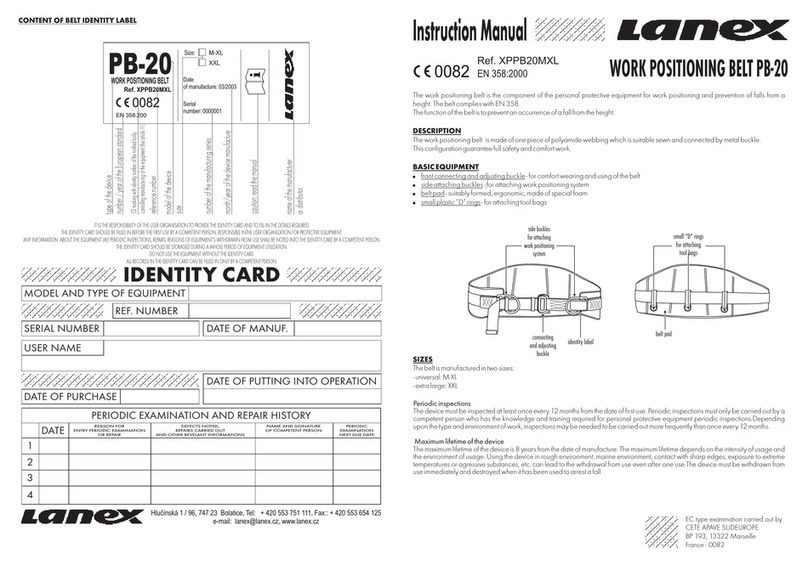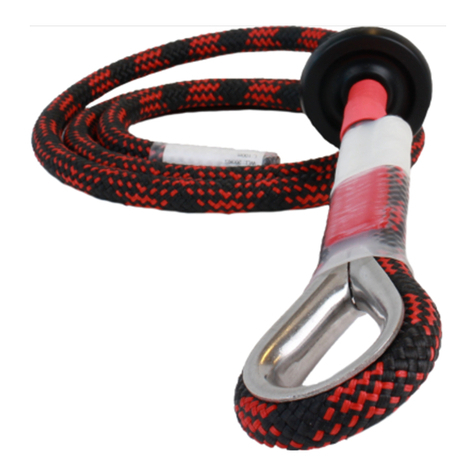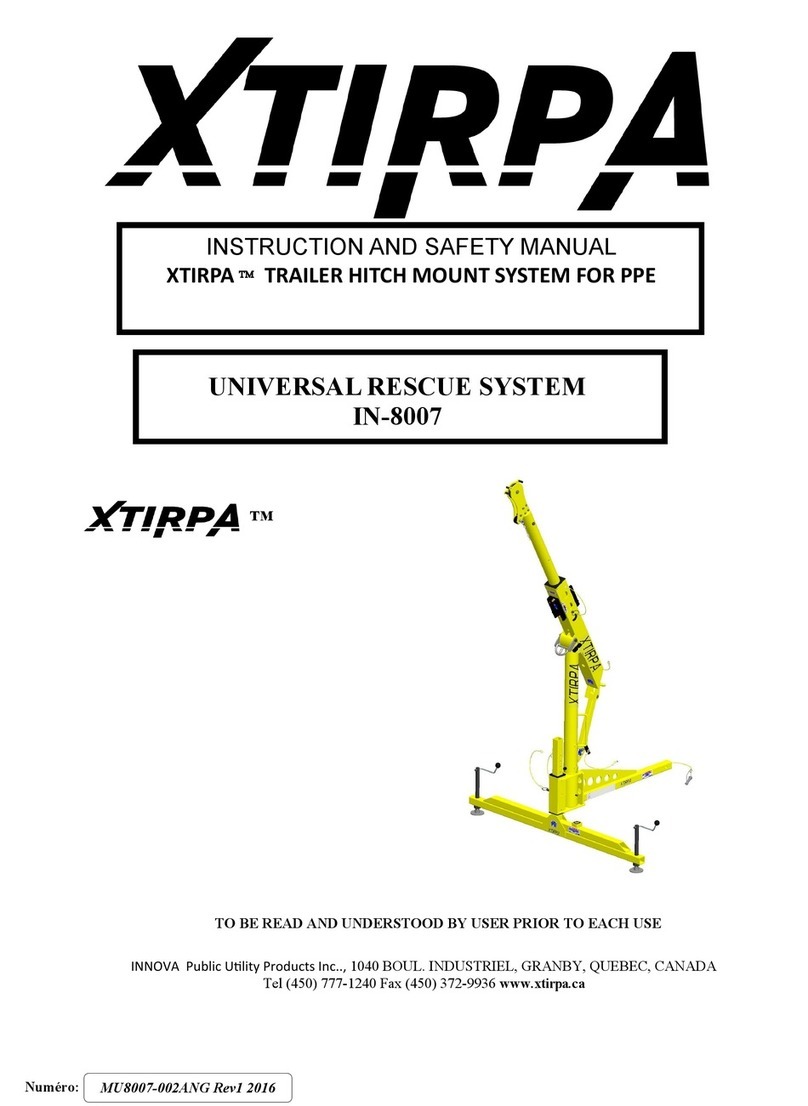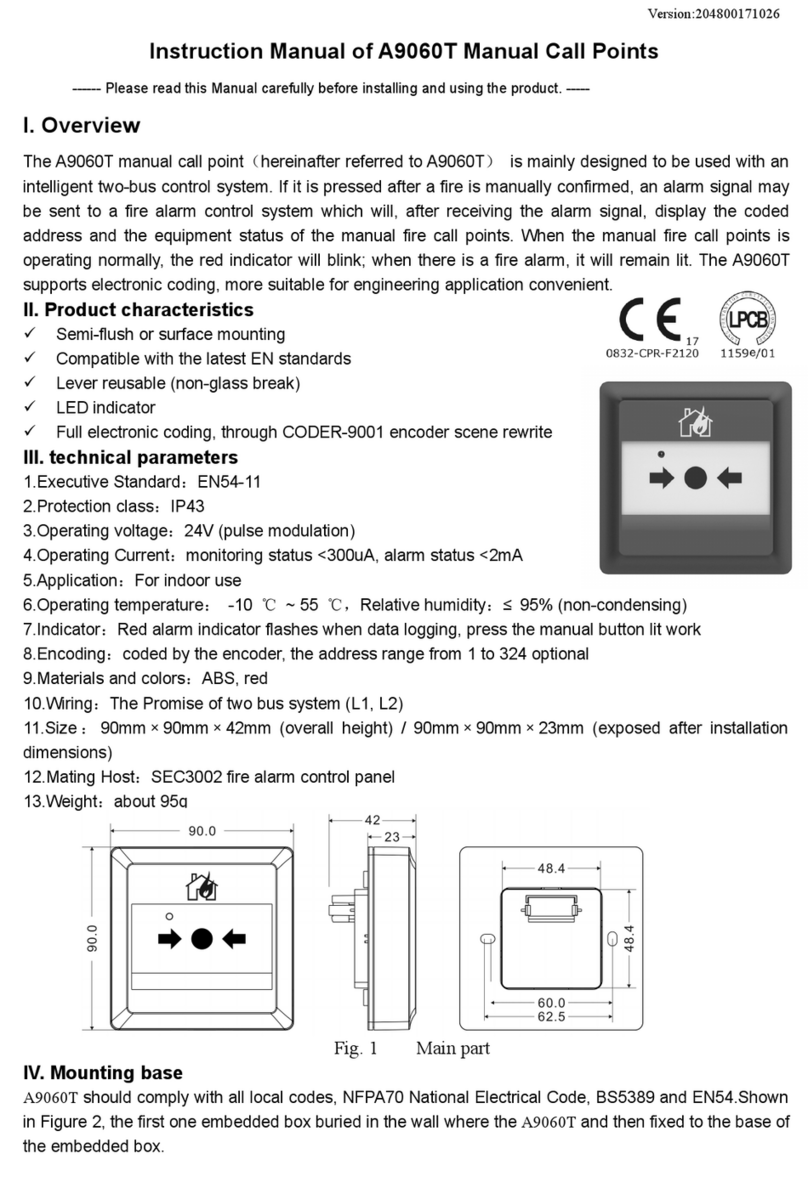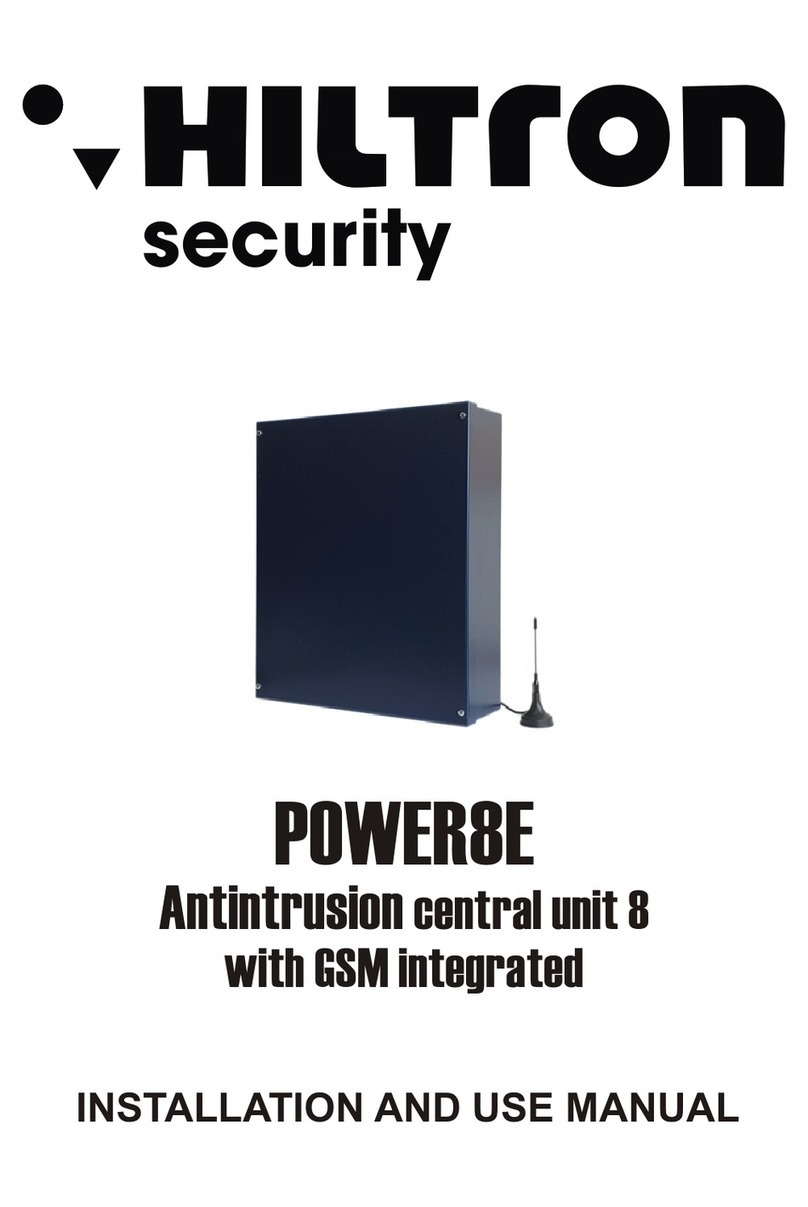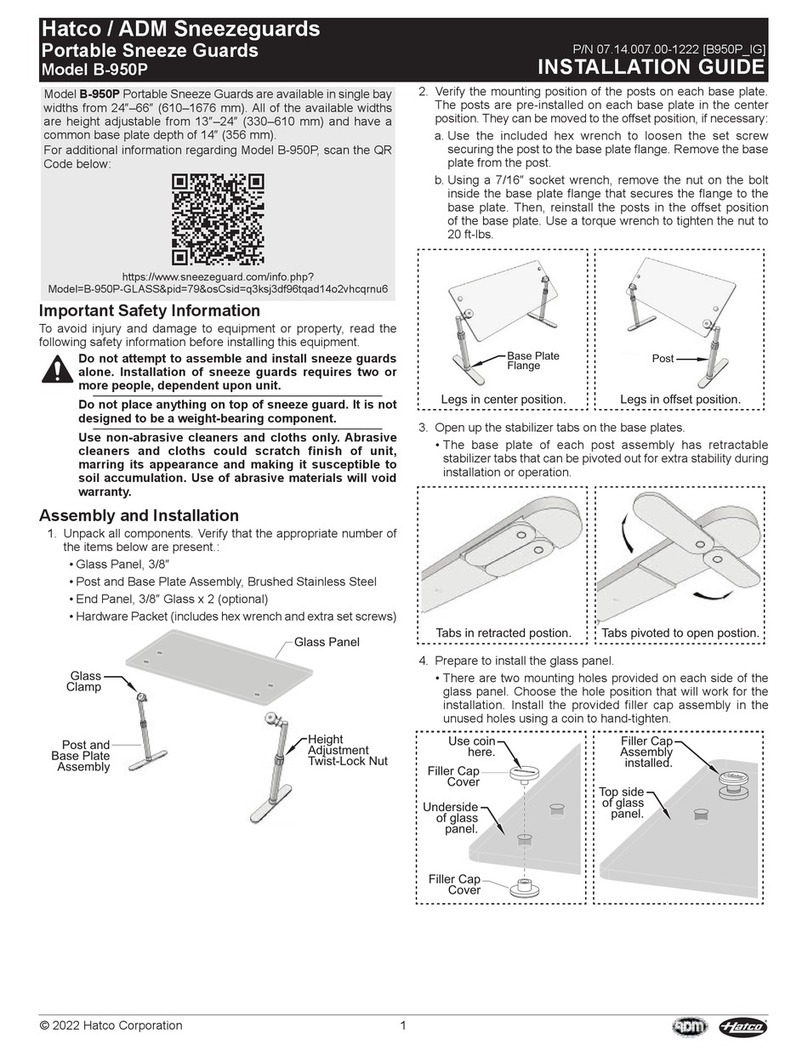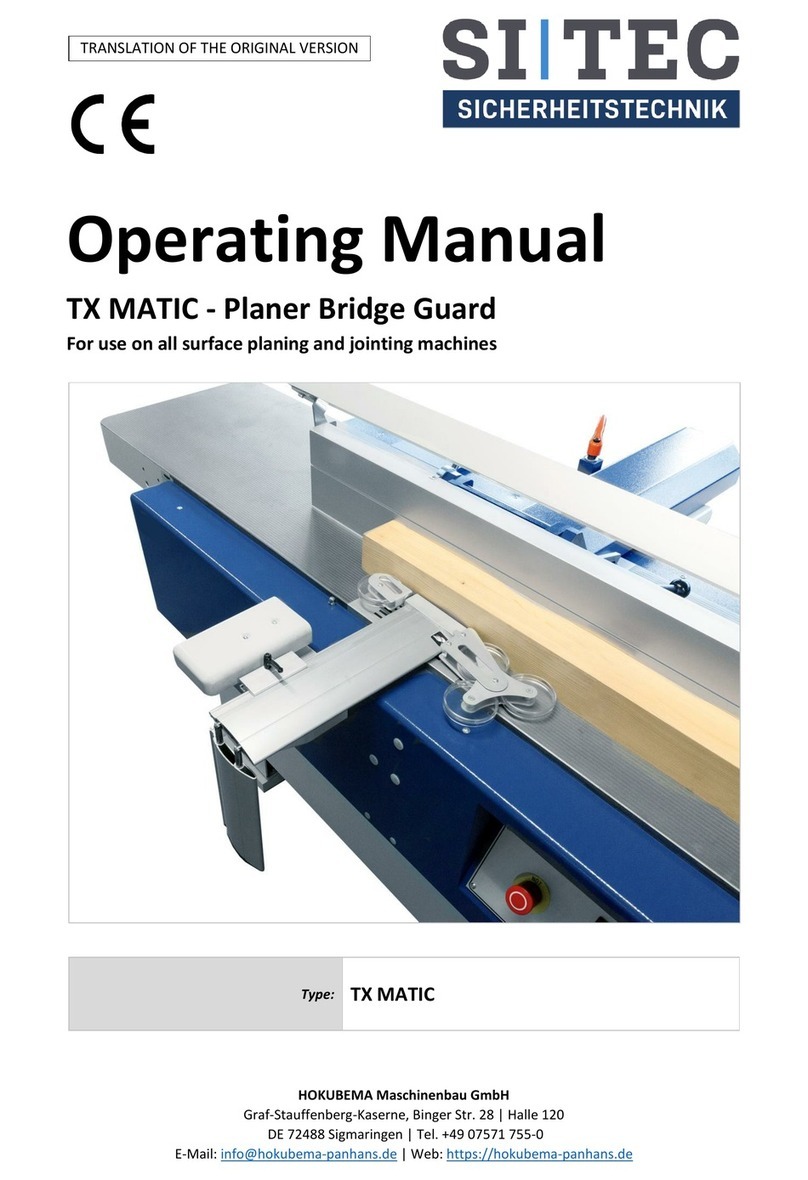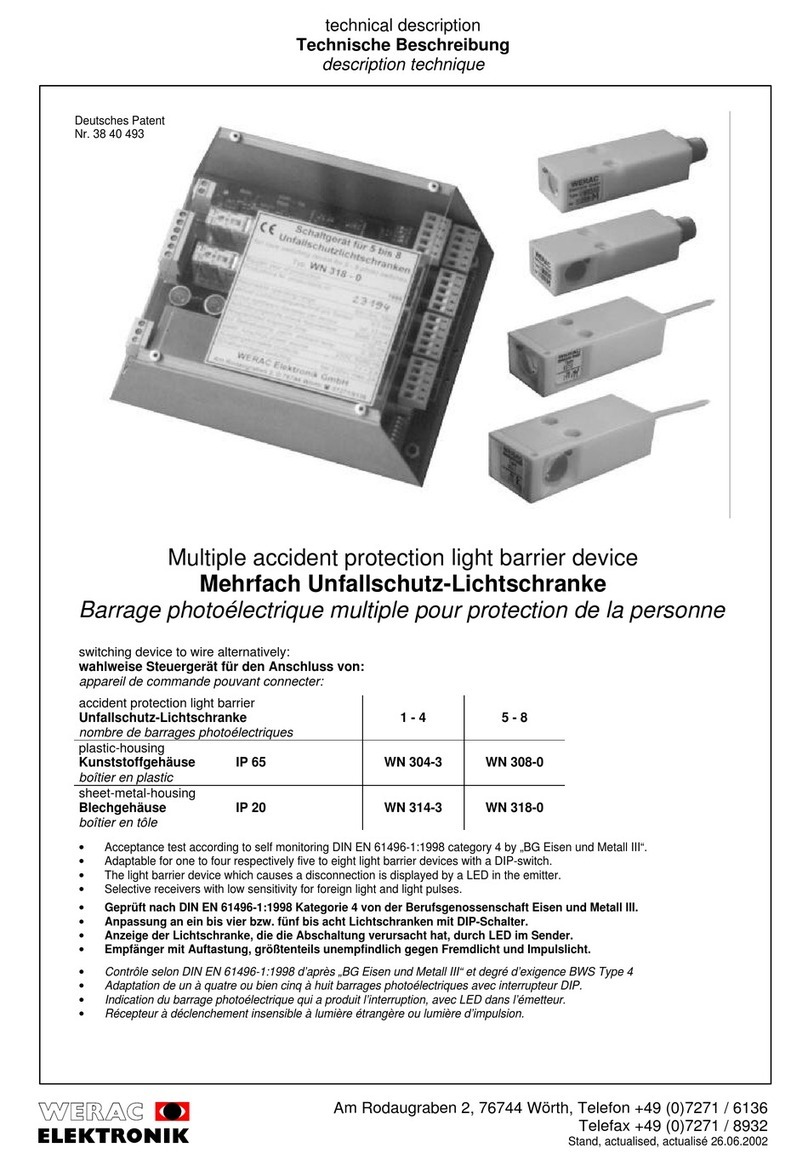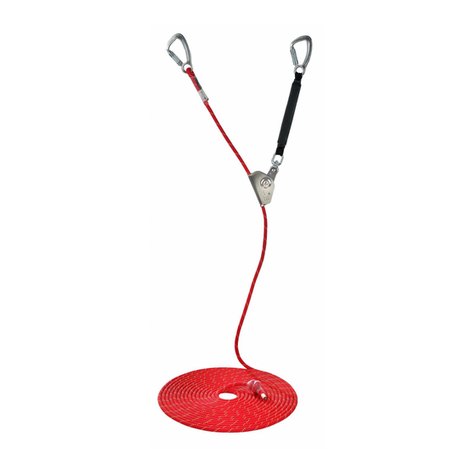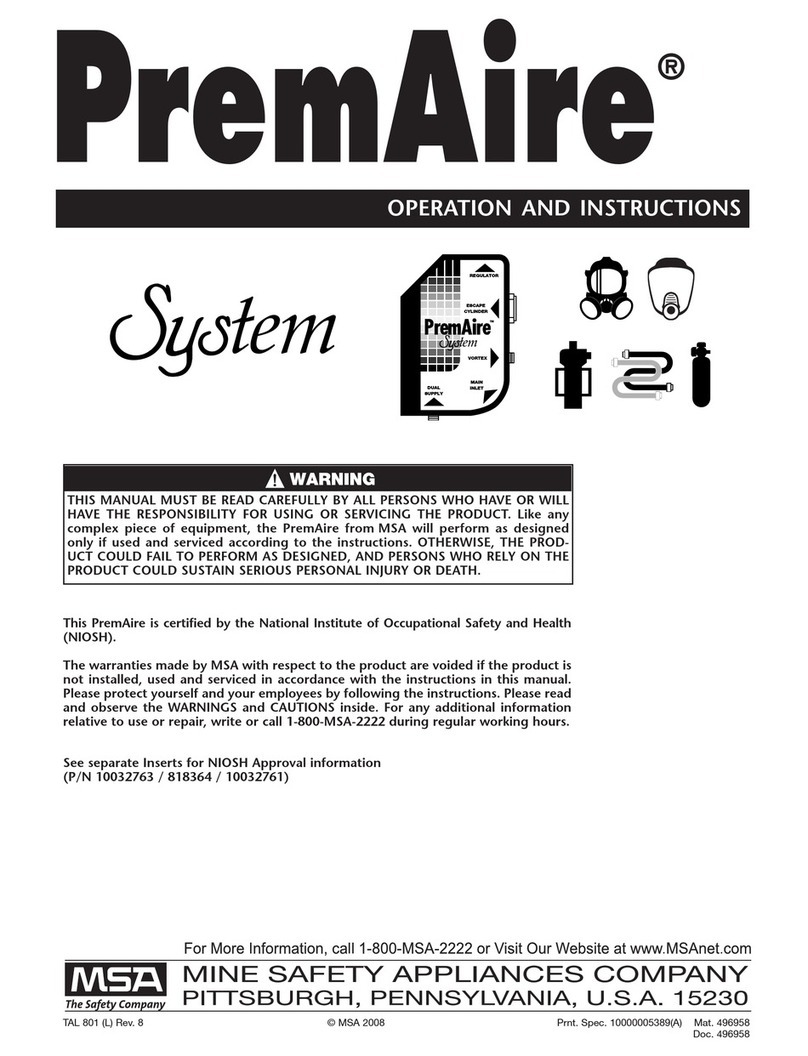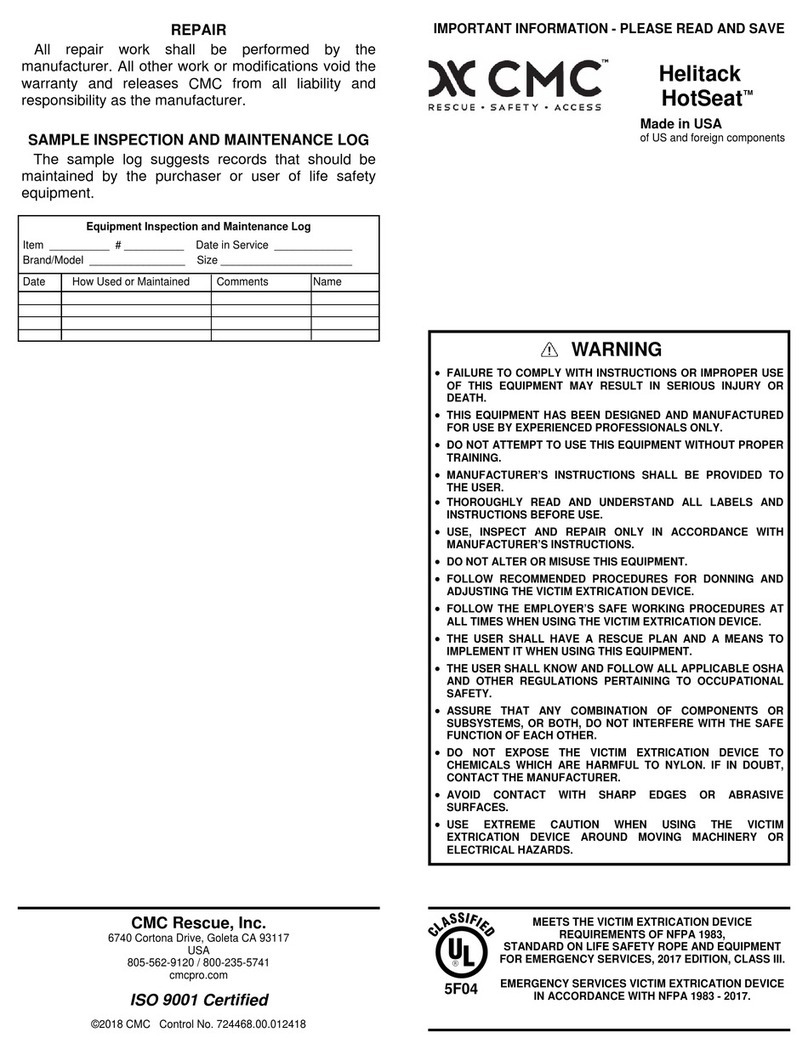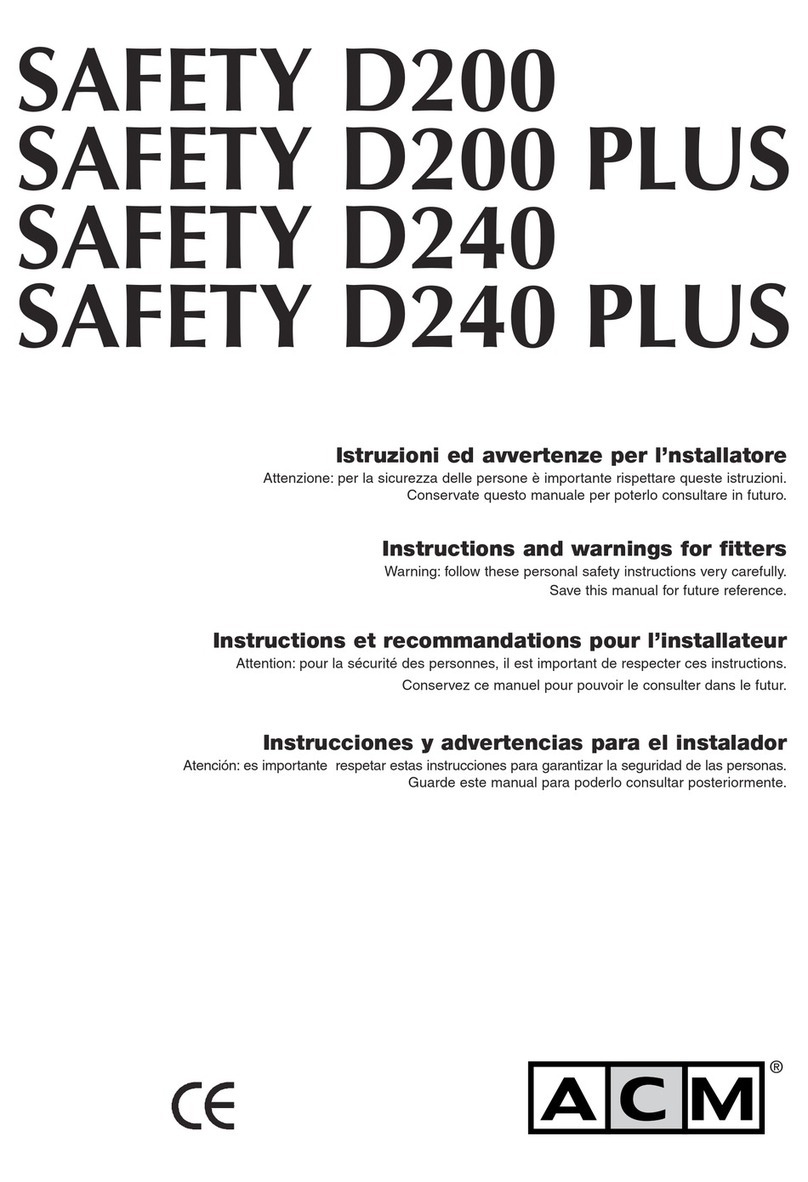
WN 304, WN 314, WN 308, WN 318 / Seite 2 von 24 page 2 of 24
Am Rodaugraben 2, D-76744 Wörth, Telefon +49 (0)7271 / 6136
Telefax +49 (0)7271 / 8932
31.05.2005
working description
1.) Funktionsbeschreibung
description du fonctionnement
First the control device WN 304, WN 314, WN 308 and WN 318 must be released by the test inputs (T1, T2). The self
monitoring logic starts and checks the photo switches in serial, each with emitter on and off. As long as the result is correct, that
means the light beams are free and without internal or external failures, the output relays A and B are energised. Each of these
relays delivers one normally opened contact for the external use. If one relay is wrong the other is deenergised and in this case
in a save condition. The switching position of the output relays is shown at the red and green LED. Depending to the use of the
ESPE, the external indicator module WA 2 (indicated on page 18) is to be well visibly attached in the proximity of the sensors. If
a light beam is interrupted the LED in the according emitter lights up till the next start. Thereby it is easier to find the reason why
the machine has stopped, especially if the failure is not static. After power-ON or a switch off by a photo switch, which also
influences the following circuit, all emitter-LED’s stay deenergised. A differentiation of the cause of switch off between the photo
switch and the safety microswitches is thereby easier to make. The device is powered via a transformer and a PTC-fuse form
the source. The restart interlock must be realised by a following circuit with relays or contactors as shown under point 6.
Das Steuergerät WN 304, WN 314, WN 308 und WN 318 muss zunächst über die Testeingänge T1 und T2 freigegeben
werden. Die selbstüberwachende Logik aktiviert nun die Lichtschranken der Reihe nach und überprüft sie bei ein- und
ausgeschaltetem Sender. Solange die Abfrage richtige Ergebnisse liefert, d.h. die Lichtschranken sind frei und ohne
interne und externe Störungen, werden die Ausgangsrelais A und B angesteuert. Jedes dieser Relais liefert einen
Ausgangskontakt zur weiteren Verarbeitung. Bei Ausfall eines der Relais bleibt das zweite Relais abgefallen, d.h. im
sicheren Zustand. Der Schaltzustand der Ausgangsrelais wird über eine rote und grüne LED angezeigt. In
Abhängigkeit der Verwendung der BWS ist das auf Seite 18 angegebene externe Anzeigemodul WA 2 in der Nähe der
Sensoren gut sichtbar anzubringen. Nach einer Störung wird die LED im Sender, der die Unterbrechung ausgelöst hat,
aktiviert. Dadurch kann auch bei kurzen Störungen der Grund für die Abschaltung festgestellt werden. Dies vereinfacht
die Fehlersuche und erhöht die Betriebssicherheit. Nach Netz EIN oder einer Abschaltung durch einen
Sicherheitskontakt, der auch auf die Nachfolgeschaltung wirkt, bleiben alle Sende-LEDs aus. Eine Unterscheidung der
Abschaltursache zwischen den Lichtschranken und den Sicherheitskontakten ist dadurch einfach erkennbar. Die
Stromzufuhr erfolgt über einen Trafo mit Kaltleitersicherung vom Netz. Die Wiederanlaufsperre muss durch die
Nachfolgeschaltung, wie unter Punkt 6 beschrieben, erfolgen.
L’appareil de commande WN 304, WN 314, WN 308 et WN 318 doit être dégagé sur les signaux de test T1 et T2. La logique
auto-contrôlant démarre et contrôle alors les barrages photoélectriques, l’un après l’autre, et les vérifie, l’émetteur étant en
marche et en arrêt. Tant que l’opération est correcte, les barrages photoélectriques sont libres et sans interférences soit interne
ou externe, les impulsions sont livrées à un transformateur sélectif de sortie. Celui-ci distribue les relais des sorties A et B.
Chacun de ces relais donne un contacte de sortie pour l’utilisation suivante. En cas de défection d’un relais, l’autre reste dans
les conditions de sécurité. La position de l’interrupteur du relais de sortie est indiquée par un LED rouge et vert. Dépendant de
l’emploi du ESPE, le module externe de signalisation WA2 d’après l’indication sur la page 18, devra être mis de façon bien
visible près des détecteurs. Après un incident, le LED sera activé dans l’émetteur qui a déclenché l’interrupteur. Ainsi la raison
de l’arrêt peut aussi être trouvée facilement. Ceci non seulement simplifie la recherche de l’erreur mais aussi élève le taux de
sécurité. Après la mise en circuit du courant ou après un arrêt de courant effectué par un contacte de sécurité (fusible) que
s’active aussi sur le contacte suivant, tous les LEDs émetteurs restent en état d’arrêt. La différence de l’interrupteur entre les
barrages photoélectriques et les contactes de sécurité est donc simple de reconnaître. L’alimentation de courant a lieu par un
transformateur muni de fusible thermistor PTC. Le blocage de remise en marche doit alors être fait par le contacte suivant
comme indiqué sur point 6.
test
2.) Testung
test
Before the machine starts it is necessary to check if the whole system works correctly. The machine control must release the
test by switching off the current through the optocoupler (terminal T1 and T2). To start the control device and for the whole
running period a current flow trough the optocoupler is necessary.
Das System muss vor jeder Betriebsaufnahme auf einwandfreie Funktion geprüft werden. Die Testung wird von der
Folgesteuerung ausgelöst, durch Aufhebung des Stromflusses durch den Optokoppler (Klemmen T1 und T2). Zum
Start der Unfallschutz-Lichtschranke und für die Betriebsdauer ist ein Stromfluss durch den Optokoppler erforderlich.
Avant la mise en marche de la machine, il est nécessaire de vérifier tout le système. La machine de contrôle doit déclencher le
test en coupant le courant à travers le coupleur optique (bornes T1 et T2). Pour démarrer le barrage photoélectrique de sécurité
et pendant toute la période de fonctionnement, le courant doit passer à travers du coupleur optique.
optical adjustment and setting the number of sensor pairs
3.) Optische Ausrichtung und Einstellung der Lichtschrankenanzahl
ajustage optique et ajustage du nombre de barrages photoélectriques
The number of light barrier devices (1-4 or 5-8) is set with the DIP-switches (S2) in accordance with the following table.
Die Lichtschrankenanzahl (1-4 bzw. 5-8) wird mit den DIP-Schaltern (S2) gemäß nachstehenden Tabellen eingestellt.
Le nombre de barrages photoélectriques est ajusté à l’aide de l’interrupteur S2 selon le tableau suivant:
light barriers
Lichtschranken (LS)
barrages photoélectriques
DIP-switch 2
DIP-Schalter 2
DIP-commutateur 2
light barriers
Lichtschranken (LS)
barrages photoélectriques
DIP-switch 2
DIP Schalter 2
DIP-commutateur 2
1 2 3 4 5 1 2 3 4
1 LS off off on on off 5 LS off off on on
2 LS on off off on off 6 LS on off off on
3 LS off on on off on 7 LS off on on off
4 LS on on off off on 8 LS on on off off
